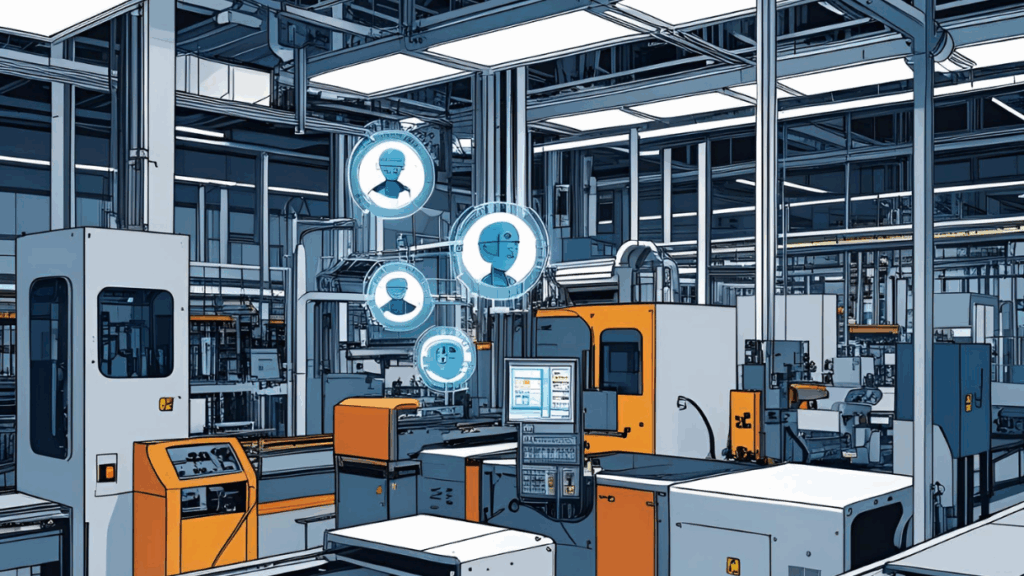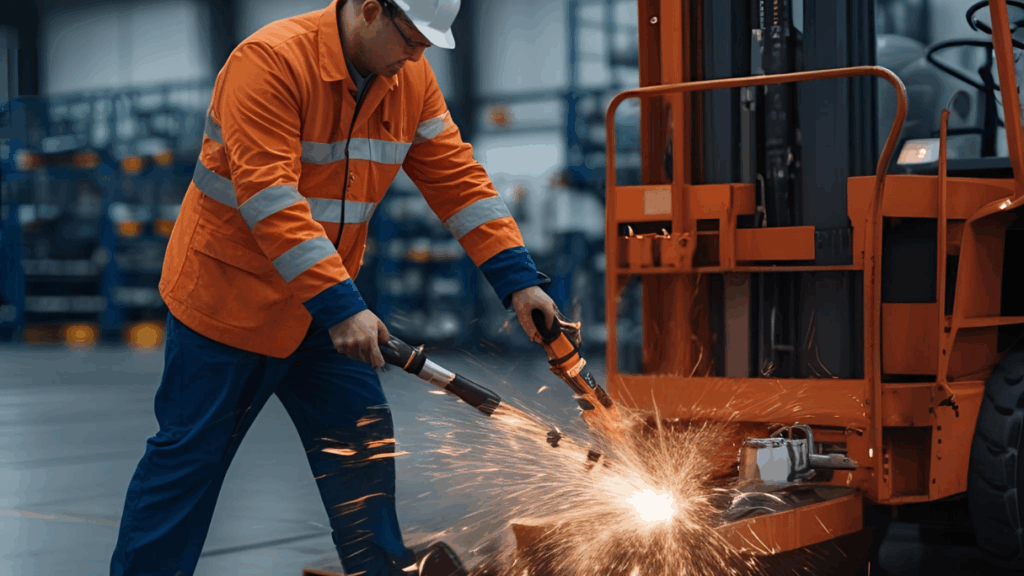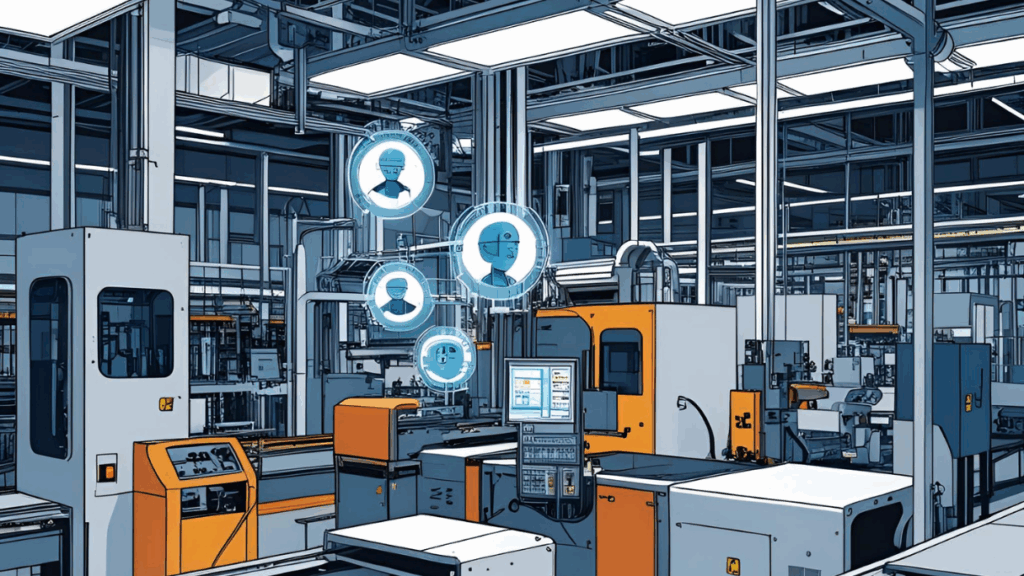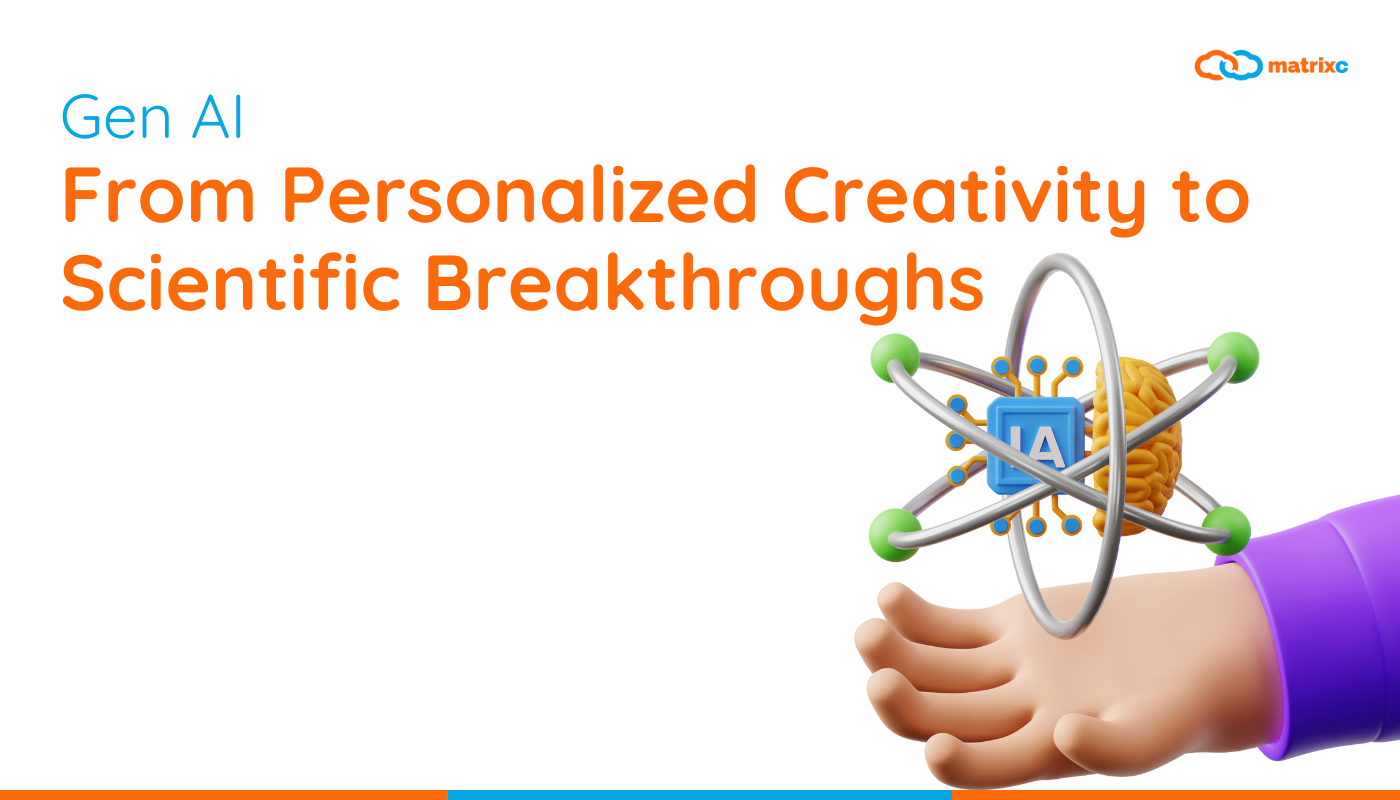In the manufacturing industry, unplanned equipment failures can lead to costly downtime, lost productivity, and increased operational expenses. Traditionally, manufacturers have relied on reactive or scheduled maintenance approaches, but these methods are often inefficient and expensive. With advancements in AI and machine learning, manufacturers can now predict when equipment is likely to fail and take proactive measures to prevent downtime.
In this article, we’ll explore how manufacturers can use AI-powered predictive maintenance to optimize maintenance schedules, reduce downtime, and improve overall efficiency—without increasing costs.

1. What Is Predictive Maintenance and Why Is It Important?
Predictive maintenance leverages data analytics and AI to predict when equipment is likely to fail, allowing manufacturers to perform maintenance before breakdowns occur. This approach contrasts with reactive maintenance (repairing after failure) or scheduled maintenance (routine servicing based on fixed schedules), both of which can lead to unnecessary downtime or wasted resources.
Key Benefits of Predictive Maintenance:
- Reduced Downtime: By predicting when equipment is likely to fail, manufacturers can perform maintenance at the optimal time, avoiding costly downtime and keeping operations running smoothly.
- Lower Maintenance Costs: Predictive maintenance allows manufacturers to focus resources on equipment that truly needs attention, reducing unnecessary maintenance and extending the life of machinery.
- Improved Efficiency: Predictive maintenance optimizes production by preventing unexpected breakdowns, improving overall equipment efficiency (OEE), and minimizing disruptions.
Pro Tip: Partner with a Google Cloud Partner Malaysia to implement AI-powered predictive maintenance solutions that align with your manufacturing processes and goals.

2. Leverage Machine Learning Models to Predict Equipment Failure
Machine learning models form the backbone of predictive maintenance systems, analyzing historical data and real-time sensor information to identify patterns that indicate potential failures. Google Cloud’s machine learning tools, such as Vertex AI and BigQuery ML, make it easier to build, train, and deploy predictive models.
How Machine Learning Predicts Equipment Failure:
- Historical Data Analysis: Machine learning models analyze historical equipment data, such as operational conditions, usage patterns, and past failures, to identify trends and indicators of failure.
- Real-Time Monitoring: By integrating machine learning models with real-time sensors, manufacturers can continuously monitor equipment performance and receive alerts when anomalies are detected.
- Predictive Algorithms: Predictive models use algorithms to estimate the remaining useful life (RUL) of equipment, allowing manufacturers to schedule maintenance at the most cost-effective time.
Pro Tip: Use BigQuery ML to train machine learning models on large datasets directly within Google Cloud’s BigQuery, allowing you to predict equipment failures without the need for complex data science workflows.

3. Automate Data Collection with IoT Sensors and Google Cloud
Predictive maintenance relies on accurate, real-time data to make predictions. By integrating Internet of Things (IoT) sensors with Google Cloud’s data infrastructure, manufacturers can automate the collection and analysis of data, ensuring that predictive models are always up to date.
How IoT Sensors Enable Predictive Maintenance:
- Real-Time Data Streams: IoT sensors collect real-time data from equipment, such as temperature, pressure, vibration, and operational hours, which is fed into predictive models for analysis.
- Data Integration with Google Cloud: Google Cloud provides tools like Cloud IoT Core and Pub/Sub to ingest, process, and analyze IoT data at scale, ensuring that predictive models are informed by the most recent data.
- Automated Alerts: When sensor data indicates a potential issue, Google Cloud can trigger automated alerts, allowing maintenance teams to take proactive action before a breakdown occurs.
Pro Tip: Implement Google Cloud IoT solutions to streamline the data collection process, reducing manual monitoring and ensuring that your predictive maintenance system has access to accurate and timely information.

4. Optimize Maintenance Schedules with AI-Driven Insights
One of the key advantages of predictive maintenance is the ability to optimize maintenance schedules based on data-driven insights. Instead of relying on static maintenance schedules, manufacturers can use AI-driven insights to perform maintenance at the most opportune times, reducing downtime and minimizing costs.
How Predictive Maintenance Optimizes Scheduling:
- Dynamic Maintenance Plans: AI models analyze the condition of equipment in real-time and adjust maintenance schedules accordingly, ensuring that machinery is serviced only when needed.
- Minimize Interruptions: By scheduling maintenance during planned downtime or less critical production periods, manufacturers can reduce disruptions to operations.
- Cost-Efficiency: Predictive maintenance helps avoid over-servicing equipment, reducing maintenance costs while improving the efficiency of operations.
Pro Tip: Use Vertex AI to analyze patterns in equipment usage and failure rates, enabling you to create predictive maintenance schedules that minimize disruption while optimizing costs.

5. Reduce Spare Parts Inventory with Predictive Analytics
Traditional maintenance strategies often require manufacturers to stockpile spare parts to avoid extended downtime in the event of equipment failure. However, with predictive maintenance, manufacturers can reduce the need for large inventories by anticipating when parts will be needed and ordering them just in time.
How Predictive Maintenance Reduces Inventory Costs:
- Accurate Forecasting: Predictive models can forecast when specific components are likely to fail, allowing manufacturers to order spare parts closer to the time of need, reducing inventory holding costs.
- Just-in-Time Inventory: By aligning spare parts procurement with predictive maintenance schedules, manufacturers can reduce excess inventory while ensuring that critical parts are available when needed.
- Supply Chain Optimization: Predictive analytics can help manufacturers coordinate with suppliers to ensure timely delivery of spare parts, avoiding stockouts and production delays.
Pro Tip: Integrate predictive maintenance data with your ERP or supply chain management system to streamline spare parts procurement and reduce inventory costs.

6. Enhance Workforce Productivity with AI Automation
Predictive maintenance powered by AI not only improves equipment reliability but also boosts workforce productivity by automating routine tasks and enabling maintenance teams to focus on high-priority issues.
How AI-Driven Predictive Maintenance Enhances Productivity:
- Automated Monitoring: AI models continuously monitor equipment health, reducing the need for manual inspections and allowing maintenance teams to focus on value-added tasks.
- Prioritized Maintenance Tasks: Predictive models provide actionable insights into which equipment requires immediate attention, enabling maintenance teams to prioritize their efforts and avoid wasting time on unnecessary checks.
- Proactive Decision-Making: By using AI-driven insights, maintenance teams can make data-informed decisions about when and how to perform repairs, reducing guesswork and improving efficiency.
Pro Tip: Use Google Cloud’s automation tools to reduce manual workloads and free up maintenance teams to focus on strategic tasks that drive operational efficiency.
Conclusion:
AI-powered predictive maintenance enables manufacturers to reduce downtime, improve efficiency, and optimize maintenance schedules without increasing operational costs. By leveraging Google Cloud’s machine learning tools, IoT sensors, and real-time data analytics, manufacturers can predict equipment failures, extend the life of machinery, and streamline maintenance processes—resulting in significant cost savings and operational improvements.
Contact Our Team
Are you interested to learn more about our products?
Do you wish to speak to us for professional advice on digitalizing your business?
Click on the button below to book a complimentary 1-on-1 consultation with an expert from our team.
















